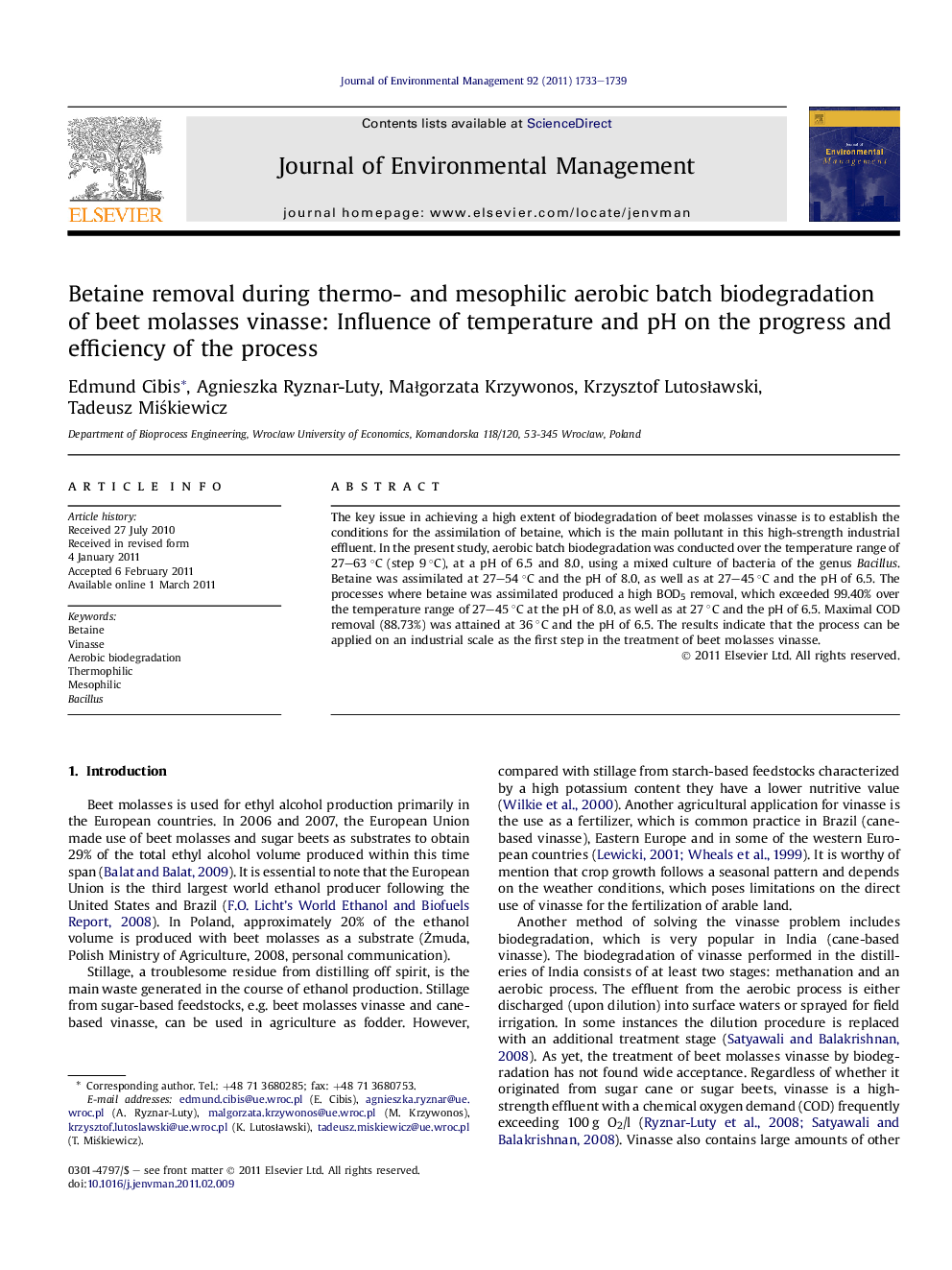| Article ID | Journal | Published Year | Pages | File Type |
|---|---|---|---|---|
| 1057155 | Journal of Environmental Management | 2011 | 7 Pages |
The key issue in achieving a high extent of biodegradation of beet molasses vinasse is to establish the conditions for the assimilation of betaine, which is the main pollutant in this high-strength industrial effluent. In the present study, aerobic batch biodegradation was conducted over the temperature range of 27–63 °C (step 9 °C), at a pH of 6.5 and 8.0, using a mixed culture of bacteria of the genus Bacillus. Betaine was assimilated at 27–54 °C and the pH of 8.0, as well as at 27–45 °C and the pH of 6.5. The processes where betaine was assimilated produced a high BOD5 removal, which exceeded 99.40% over the temperature range of 27–45 °C at the pH of 8.0, as well as at 27 °C and the pH of 6.5. Maximal COD removal (88.73%) was attained at 36 °C and the pH of 6.5. The results indicate that the process can be applied on an industrial scale as the first step in the treatment of beet molasses vinasse.
